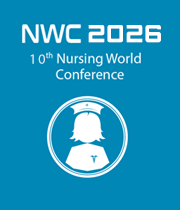Title : Optimizing IV access for CT: A quality improvement initiatives to reduce infiltration outpatient CT
Abstract:
At the HMH outpatient CT scan unit, the intervention aimed to address a pressing issue: the high rate of IV infiltration during power injection of the CT contrast. In December 2023, data revealed an infiltration rate of 0.50% to 0.54% spanning 8,000 outpatient procedures. These infiltration events resulted in notable patient discomfort, procedural delays, and serious risks of tissue damage, underscoring the urgent need for effective strategies to mitigate these complications (Smith et al., 2022). Previous research has established a correlation between higher infiltration rates and decreased patient satisfaction, as well as compromised safety (Johnson, 2023). In response, the CT scan unit staff implemented a comprehensive strategy focused on reducing these rates. Central to this initiative was an extensive training program on ultrasound-guided peripheral IV (PIV) insertions, which have demonstrated improved success rates, particularly for patients with difficult venous access (Adams & Lee, 2023). Additionally, the use of 1.75-inch catheters was recommended to ensure better stability in at-risk patients. To further enhance patient safety, a standardized set of flushing and blood return guidelines was established (Miller et al., 2023), alongside efforts to promote pre-scan hydration, aimed at improving vein visibility (Gonzalez, 2023). The primary objective of this initiative is to validate the hypothesis that targeted interventions can lead to a significant reduction in IV infiltration rates during CT contrast injections. A multifaceted approach will be taken to assess the effects of ultrasound-guided PIV insertions on first-attempt success rates, compare the efficacy of 1.75-inch catheters to shorter alternatives, and evaluate adherence to standardized flushing and verification protocols. Furthermore, the relationship between pre-scan hydration and vein visibility will be analyzed. The overarching goal is to lower the infiltration rate from 0.21% to an ambitious 0.10% by June 2025, thereby significantly enhancing patient safety and overall care quality. To systematically evaluate the interventions' effectiveness, the HMH outpatient CT scan unit will employ a Plan-Do-Study-Act (PDSA) cycle. In the Plan phase, specific objectives such as improving first-attempt success rates for ultrasound-guided IV insertions and ensuring adherence to flushing guidelines will be outlined. The Do phase involves staff training and the establishment of a new standard of care. During the Study phase, data will be collected over six months to assess the impact of the implemented changes. In the Act phase, insights derived from this data will be utilized to refine protocols and training, further enhancing patient safety. Initial outcomes suggest that implementing these targeted interventions has already led to a notable reduction in IV infiltration rates, dropping from the pre-intervention range of 0.50% to 0.52% to 0.21% by June 2024. This significant improvement has alleviated patient discomfort and procedural delays while reducing the risk of potential tissue damage. The findings validate the critical role of thorough training in ultrasound-guided PIV insertions, the utilization of longer catheters, adherence to established protocols, and encouraging pre-scan hydration. To sustain and further improve these positive results, several key actions will be undertaken. An ongoing reinforcement training program will be established, alongside a data monitoring system to track IV access rates and infiltration incidents. This system will produce monthly and quarterly reports to identify trends and areas for enhancement. Additionally, gathering patient feedback through surveys and focus groups will be instrumental in refining the patient experience. Emphasis on interdisciplinary collaboration among nurses and CT technologists will ensure a unified approach to IV insertion practices, ultimately setting a high standard for outpatient imaging services.



